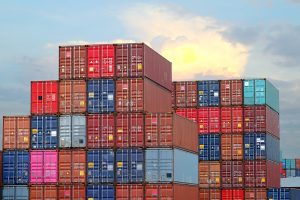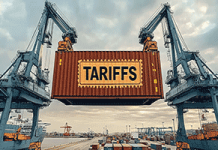 The International Longshoremen’s Association (ILA) and United States Maritime Alliance (USMX) yesterday reached a tentative agreement on all items for a new six-year Master Contract.
The International Longshoremen’s Association (ILA) and United States Maritime Alliance (USMX) yesterday reached a tentative agreement on all items for a new six-year Master Contract.
The two sides agreed to continue to operate under the current contract until the union can meet with its full Wage Scale Committee and schedule a ratification vote, and USMX members can ratify the terms of the final contract.
In a joint statement, the two sides said the agreement is a win for both sides and would advert any work stoppage on January 15, 2025.
“This agreement protects current ILA jobs and establishes a framework for implementing technologies that will create more jobs while modernizing East and Gulf coast ports–making them safer and more efficient, and creating the capacity they need to keep our supply chains strong,” they said. “This is a win-win agreement that creates ILA jobs, supports American consumers and businesses, and keeps the American economy the key hub of the global marketplace.”
Details of the new tentative agreement will not be released to allow ILA rank-and-file-members and USMX members to review and approve the final document.
CalChamber, Coalition Support
Last month, the California Chamber of Commerce joined a coalition of 267 federal, state and local trade associations in urging East/Gulf Coast labor and management leaders to resume port labor negotiations. In a letter to the ILA and USMX, the coalition acknowledged that automation and technology continues to be the biggest issue of disagreement between the ILA and USMX but argued there is a path forward for the parties to address this issue.
The coalition asserted that it is critical that ports and terminals have the ability to modernize their systems and processes to remain globally competitive and be able to handle the continuing rise of trade volumes, both imports and exports, through the nation’s ports.
Modernization can happen only through true partnership between labor and management, as well as the other supply chain stakeholders that rely on these ports. Modernization efforts will benefit all parties and are essential to address current and future issues.
Past Strike
On Thursday, October 3, 2024, three days after the strike began, joint statements from the ILA and the USMX management group, representing shipping lines, terminal operators and port authorities, announced a tentative agreement that extended the current master contract to January 15, 2025.
The tentative agreement included a 61.5% wage increase over the life of the six-year contract — raising average wages from $39 an hour to about $63 an hour. The ILA originally had requested 77%, and the USMX countered with 50% earlier in the week.
The ILA strike affected 45,000 dockworkers at 36 container ports from Texas to Maine — including New York/New Jersey, Houston, and Savannah, Georgia. The contract in question covered six of the 10 busiest U.S. ports, which collectively handle more than 13 million containers annually.
The strike had the potential to disrupt U.S. supply chains, pose national security implications, and in general terms, paralyze as much as half the nation’s seaborne trade volumes.
Products Potentially Affected
Perishable food imports, wine, auto parts and pharmaceuticals from Europe could have been greatly affected. Ports on the East and Gulf coasts handle roughly 75% of the bananas that enter the United States. There is a no strike pledge for U.S. military goods and passenger cruise vessels would not have been affected. The ILA had not gone on strike since 1977.
Potential West Coast Impact
A prolonged shutdown could have affected West Coast ports, eventually leading to capacity and empty container shortages.
A potential strike would have come at a challenging time for ocean supply chains, which already have faced significant disruptions with the drought in the Panama Canal, the Baltimore Bridge collapse, and the Red Sea conflict. There was talk of West Coast workers being unwilling to unload cargo originally bound for the East Coast and a worst-case scenario if the West Coast dock workers walked out in solidarity.
The Federal Maritime Commission (FMC) had warned carriers and operators against imposing excessive detention and demurrage fees during the strike, to protect shippers from unfair charges such as occurred during the pandemic-related port congestions.
Shipping Data
Nearly 70% of U.S. exports and 56% of containerized U.S. imports come through East Coast and Gulf Coast ports, according to data cited by the National Association of Manufacturers. More specifically:
- More than 68% of all containerized exports and more than 56% of containerized imports flow through East and Gulf Coast ports, representing an average daily trade value of more than $2.1 billion.
- They handle more than 91% of containerized imports and 69% of containerized exports of pharmaceutical products.
- They also process more than 76% of containerized vehicle exports and more than 54% of containerized vehicle imports.
- For aircraft and spacecraft, more than 77% of containerized exports and more than 51% of containerized imports go through these ports.
Staff Contact: Susanne T. Stirling

